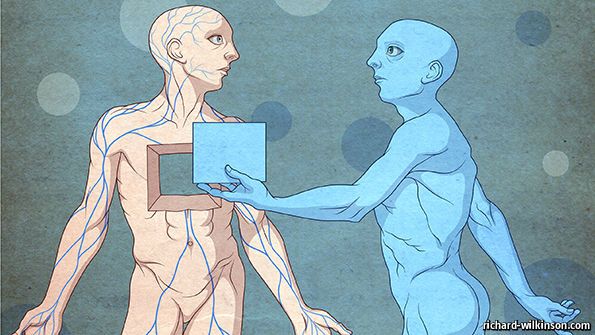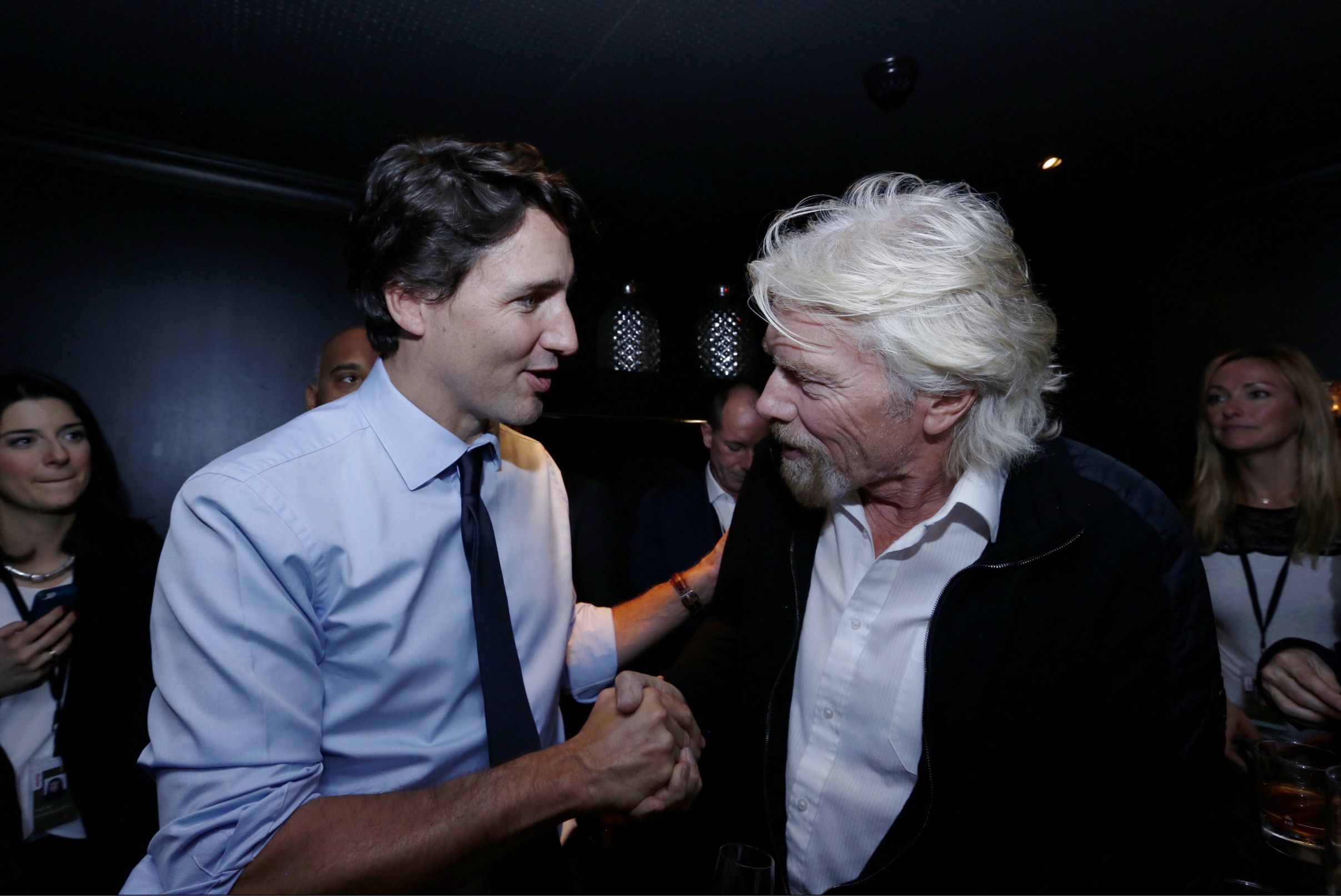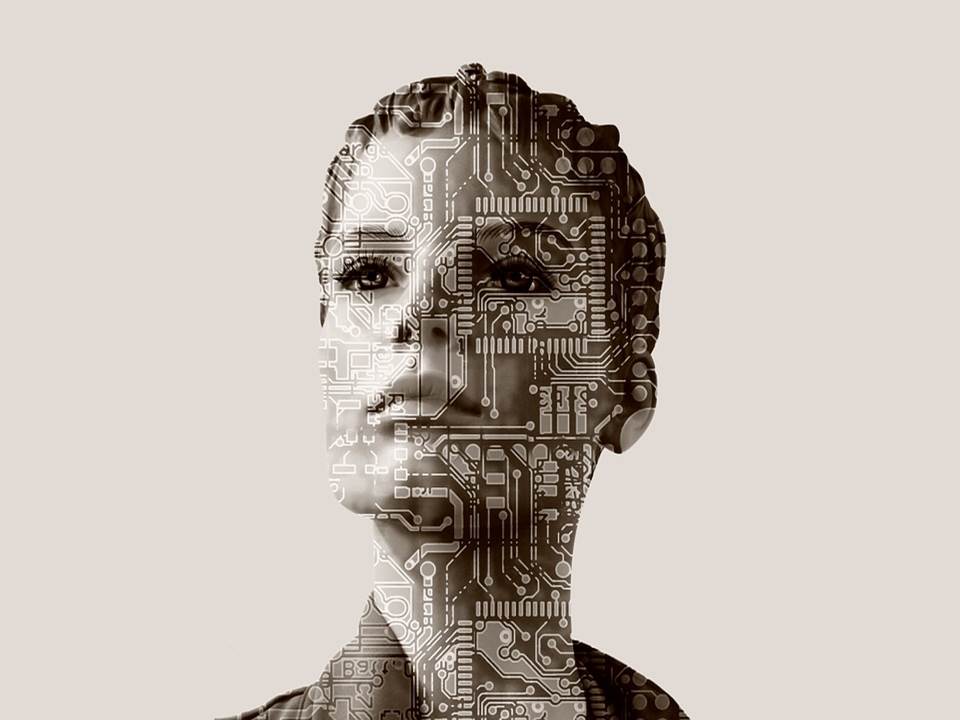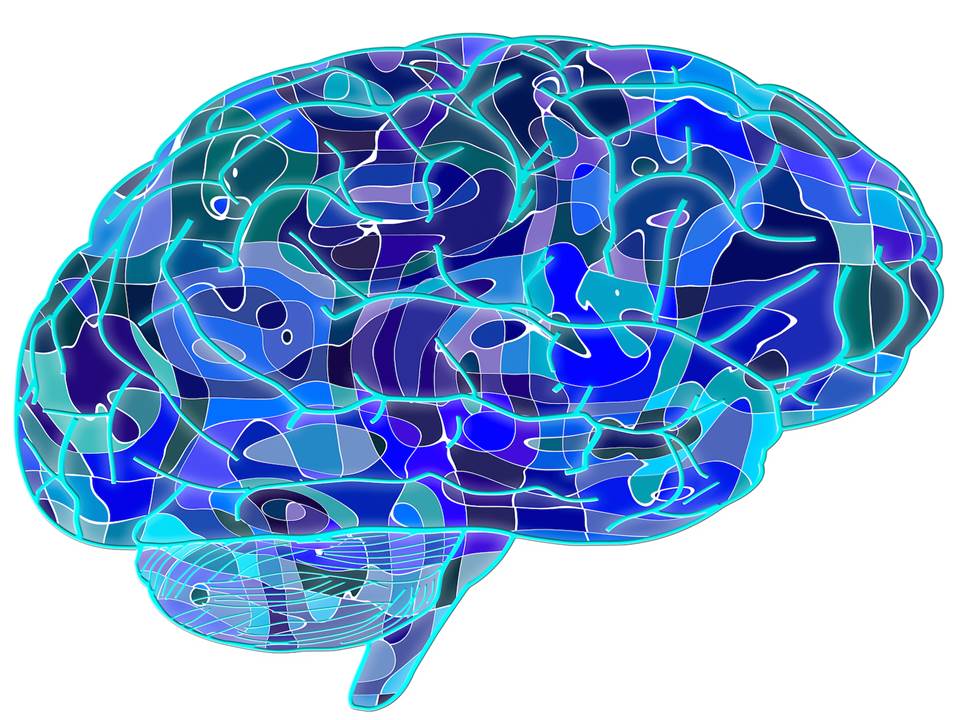[youtube_sc url=“https://www.youtube.com/watch?v=FfNmJM49aes”]
Category: human trajectories

What Happened When I Gave Up Gluten, Sugar, Dairy, And Coffee — By Stephanie Pizza | Fast Company
“For lasting results you need to create a lifestyle change.”
Brexit for Transhumanists: A Parable of Getting What You Wish For
For the past two years, Zoltan Istvan has been campaigning for the US presidency on the Transhumanist Party, a largely one-man show which nevertheless remains faithful to the basic tenets of transhumanism. Now suppose he won. Top of his policy agenda had been to ensure the immortality of all Americans. But even Zoltan realized that this would entail quite big changes in how the state and society function. So, shortly after being elected president, he decides to hold a national referendum on the matter.
The question on the ballot is one that makes the stakes crystal clear: ‘The government shall endeavour to release all Americans from the constraints of mortality’. Zoltan liked this way of putting things because were he to lose to the referendum, which he half-presumed, the opportunity to air publicly the relevant issues would continue to shift naysayers in Congress to increase funding for broadly anti-death research and treatments — a step in the right direction, as far as he’s concerned.
Zoltan also liked the idea that the referendum effectively ‘rotated the political axis’, from left-right to up-down, a turn of phrase he picked up from some philosopher whose name he couldn’t remember. But this also meant that the ensuing campaign, which was fierce, attracted a motley crew of supporters on both sides.
The ‘Remainers’ (as the anti-immortalists call themselves) were composed of a mix of traditional religious believers, environmental activists and hard-headed sceptics who distrust all transcendental hype, whether it comes from religion or science. In other words, those who wanted us to remain in our normal bodies held that our fate either is confined to our current circumstances or requires that we remain in those circumstances in order for something better to happen post mortem. The stakes were so high that even the Pope was called out to argue the case, which of course he was more than happy to do, Obama-style.
On the other hand, the ‘Leavers’ who espouse immortality were an even more mixed bag. Some on the ‘soft’ side of the argument wanted us to remain in our biological bodies, but in a fortified form that makes us forever resistant to foreign agents. Thus, the prospect of reversing the ageing process got sold as an indefinite productivity booster, allowing us to do what we already do but without the constraints imposed by age and death. In contrast, the ‘hard’ side wanted us to leave our biological bodies altogether and enter into the relatively unregulated realm of ‘digital immortality’, which was sold as enabling us to interact with a broader range of agents than we could otherwise do, both on Earth and maybe even in the cosmos. Indeed, various interfaces were being developed that would enable us to exchange data easily with all sorts of non-human beings to mutual benefit. And matters could go much further – even towards a ‘Singularity’, a universal free trade data zone! However, none of this could be brought to fruition unless we first release ourselves from various codes and norms that inhibit their development and use.
It turns out that the Leavers managed to suppress their differences during the campaign and surprisingly eked out a narrow win. But what was President Zoltan to do? Understandably he wanted to keep his options open with regard to how immortality is implemented. So the first thing he did was to appoint a cabinet with a broad church of Leavers on board, and so both Aubrey de Grey and Ray Kurzweil figured prominently. But these guys pulled the implementation of Leave in opposing directions. De Grey wanted to focus on a radical extension of conventional medical research. Indeed, when de Grey first heard that President Zoltan was holding a referendum, he was concerned that ‘immortality’ might mean only the digital immortality favoured by Kurzweil, which de Grey regards as a complete fantasy.
By the time the referendum campaign began, Zoltan had managed to get Congressional approval to increase funding and loosen regulation in ways that enabled various pro-immortality research projects to move forward at an unprecedented pace. However, as the campaign progressed, it became clear that the soft immortalist side was lagging: There appeared to be much greater cellular complexity to the reversal of ageing than de Grey and his colleagues had imagined.
Meanwhile a clever tech entrepreneur, inspired by the economist Robin Hanson, had figured out a way to scan living brains for purposes of uploading them into machines capable of enhancing their computational power indefinitely. These brain emulations (or ‘ems’) are indeed at least in principle immortal, but at the cost of leaving the original human in a state of disorganized mush, which is to say, biologically ‘dead’. Because Zoltan had already de-regulated all transhumanist-related industries, the ‘ems’ end up dominating the market, with large public relations firms emerging to persuade people that they will live better lives by abandoning their biological bodies and uploading into what some liken to Star Trek’s Borg.
After a few generations, Earth had earned a reputation as the most rational death cult in the cosmos.
And they all ‘lived’ happily ever after…
Beware the Rise of Gerontocracy: Some Hard Lessons for Transhumanism, Not Least from Brexit
Transhumanists will know that the science fiction author Zoltan Istvan has unilaterally leveraged the movement into a political party contesting the 2016 US presidential election. To be sure, many transhumanists have contested Istvan’s own legitimacy, but there is no denying that he has generated enormous publicity for many key transhumanist ideas. Interestingly, his lead idea is that the state should do everything possible to uphold people’s right to live forever. Of course, he means to live forever in a healthy state, fit of mind and body. Istvan cleverly couches this policy as simply an extension of what voters already expect from medical research and welfare provision. And while he may be correct, the policy is fraught with hazards – especially if, as many transhumanists believe, we are on the verge of revealing the secrets to biological immortality.
In June, Istvan and I debated this matter at Brain Bar Budapest. Let me say, for the record, that I think that we are sufficiently close to this prospect that it is not too early to discuss its political and economic implications.
Two months before my encounter with Istvan, I was on a panel at the Edinburgh Science Festival with the great theorist of radical life extension Aubrey de Grey, where he declared that people who live indefinitely will seem like renovated vintage cars. Whatever else, he is suggesting that they would be frozen in time. He may actually be right about this. But is such a state desirable, given that throughout history radical change has been facilitated generational change? Specifically, two simple facts make the young open to doing things differently: The young have no memory of past practices working to anyone else’s benefit, and they have not had the time to invest in those practices to reap their benefits. Whatever good is to be found in the past is hearsay, as far as the young are concerned, which they are being asked to trust as they enter a world that they know is bound to change.
Questions have been already raised about whether tomorrow’s Methuselahs will wish to procreate at all, given the time available to them to realize dreams that in the past would have been transferred to their offspring. After all, as human life expectancy has increased 50% over the past century, the birth rate has correspondingly dropped. One can only imagine what will happen once ageing can be arrested, if not outright reversed!
So, where will the new ideas of the future come from? The worry here is that society may end up being ruled by people with overlong memories who value stability over change: Think China and Japan. But perhaps the old Soviet Union is the most telling example, as its self-consciously revolutionary image gradually morphed into a ritualistic veneration of the original 1917 revolutionary moment. To these gerontocratic indicators, the recent UK vote to leave the European Union (‘Brexit’) adds a new twist. There were some clear age-related patterns in the outcome: The older the voter, the more likely to vote to leave – and the more likely to vote at all. To be sure, given the closeness of the vote (52% to leave vs. 48% to remain), had the young voted in comparable numbers to their elders, Brexit would have lost.
One might think that the simple solution is to encourage, if not force, the young to vote in larger numbers. However, this does not take into account the liabilities of their elders when it comes to dictating the terms for living in the future. Whatever benefits might accrue to people living longer, the clarity of the memories of such people may not be an unmitigated good, as it might incline them to perpetuate what they regard as the best of their own pasts. One way around this situation is to weight votes inversely to age. In other words, the youngest voters would effectively get the most votes and the oldest voters the least. This would continually force the elders to make their case in terms that their juniors can appreciate. The exercise would serve to destabilize any sense of nostalgia that members of the same generation might experience simply by virtue of having experienced the same events at the same age.
However, two technologically based solutions also come to mind. One is for the elderly to be subject to the strategic memory loss procedure described in the film, The Eternal Sunshine of the Spotless Mind, which might be understood as a the cognitive correlate of an inheritance tax – or even a high-class lobotomy! In other words, the elders would lose their personal attachment to events which would nevertheless remain available in the historical record for more detached scrutiny vis-à-vis their lessons for the future. The other, more drastic solution involves incentivizing the elders to exchange biological for digital immortality. This would enable them to enjoy a virtual existence in perpetuity. They might be resurrected (‘downloaded’) on a regular or simply a need-to-remember basis, depending on prior contractual arrangements. The former might be seen as more ‘religious’, as in a Roman Catholic feast day, and the latter more ‘secular’, as in an ‘on tap’ consultant. But in either virtual form, the elders could retain their attachment to certain past events with impunity while at the same time not inflicting their memories needlessly on present generations.
David Wood, the head of the main UK transhumanist organization, London Futurists, has recently published a summa of anti-ageing arguments, which makes a cumulatively persuasive case for indefinite life extension being within our grasp. But most assuredly, this would create as many social problems as it solves biological ones. Under most direct threat would be the sorts of values historically associated with generational change, namely, those related to new thinking and fresh starts. Of course, as I have suggested, there are ways around this, but they will invariably revive in a new high-tech key classic debates concerning the desirability of brainwashing and suicide.

What the evolution of human culture can teach us about international relations — By Mark Leon Goldberg | UN Dispatch
An interview with Stewart Patrick, “a Senior Fellow and Director of the International Institutions and Global Governance Program at the Council on Foreign Relations.”
“Liberation technologies” and the ones who will gain
[youtube_sc url=“https://www.youtube.com/watch?v=hYWHJudLjq0” title=“Emerging%20tech%20should%20not%20be%20feared%20if%20you%20favor%20liberation%20and%20progress” border=“1” autoplay=“0”]
How could global economic inequality survive the onslaught of synthetic organisms, micromanufacturing devices, additive manufacturing machines, nano-factories?
(http://www.beliefnet.com/columnists/lordre/2016/04/obsessed-with-equality-my-techno-utopia.html#S5Ogqvv8PL36KMDo.99)
Narrated by Harry J. Bentham, author of Catalyst: A Techno-Liberation Thesis (2013), using the introduction from that book as a taster of the audio version of the book in production. (http://www.clubof.info/2016/04/liberation-technologies-to-come.html)
Paperback: http://www.amazon.com/Catalyst-Techno-Liberation-Harry-J-Bentham/dp/1500436720/
Kindle: http://www.amazon.com/Catalyst-Techno-Liberation-Harry-J-Bentham-ebook/dp/B00E7H4TIQ/
Audio: coming soon!

Resurrection and Biotechnology
“He is not here; He has risen,” — Matthew 28:6
As billions of Christians around the world are getting ready to celebrate the Easter festival and holiday, we take pause to appreciate the awe inspiring phenomena of resurrection.
In religious and mythological contexts, in both Western and Eastern societies, well known and less common names appear, such as Attis, Dionysus, Ganesha, Krishna, Lemminkainen, Odin, Osiris, Persephone, Quetzalcoatl, and Tammuz, all of whom were reborn again in the spark of the divine.
In the natural world, other names emerge, which are more ancient and less familiar, but equally fascinating, such as Deinococcus radiodurans, Turritopsis nutricula, and Milnesium tardigradum, all of whose abilities to rise from the ashes of death, or turn back time to start life again, are only beginning to be fully appreciated by the scientific world.
In the current era, from an information technology centric angle, proponents of a technological singularity and transhumanism, are placing bets on artificial intelligence, virtual reality, wearable devices, and other non-biological methods to create a future connecting humans to the digital world.
This Silicon Valley, “electronic resurrection” model has caused extensive deliberation, and various factions to form, from those minds that feel we should slow down and understand the deeper implications of a post-biologic state (Elon Musk, Steven Hawking, Bill Gates, the Vatican), to those that are steaming full speed ahead (Ray Kurzweil / Google) betting that humans will shortly be able to “transcend the limitations of biology”.
However, deferring an in-depth Skynet / Matrix discussion for now, is this debate clouding other possibilities that we have forgotten about, or may not have even yet fully considered?
Today, we find ourselves at an interesting point in history where the disciplines of regenerative sciences, evolutionary medicine, and complex systems biology, are converging to give us an understanding of the cycle of life and death, orders of magnitude more complex than only a few years ago.
In addition to the aforementioned species that are capable of biologic reanimation and turning back time, we show no less respect for those who possess other superhuman capabilities, such as magnetoreception, electrosensing, infrared imaging, and ultrasound detection, all of which nature has been optimizing over hundreds of millions of years, and which provide important clues to the untapped possibilities that currently exist in direct biological interfaces with the physical fabric of the universe.
The biologic information processing occurring in related aneural organisms and multicellular colony aggregators, is no less fascinating, and potentially challenges the notion of the brain as the sole repository of long-term encoded information.
Additionally, studies on memory following the destruction all, or significant parts of the brain, in regenerative organisms such as planarians, amphibians, metamorphic insects, and small hibernating mammals, have wide ranging implications for our understanding of consciousness, as well as to the centuries long debate between the materialists and dualists, as to whether we should focus our attention “in here”, or “out there”.
I am not opposed to studying either path, but I feel that we have the potential to learn a lot more about the topic of “out there” in the very near future.
The study of brain death in human beings, and the application of novel tools for neuro-regeneration and neuro-reanimation, for the first time offer us amazing opportunities to start from a clean slate, and answer questions that have long remained unanswered, as well as uncover a knowledge set previously thought unreachable.
Aside from a myriad of applications towards the range of degenerative CNS indications, as well as disorders of consciousness, such work will allow us to open a new chapter related to many other esoteric topics that have baffled the scientific community for years, and fallen into the realm of obscure curiosities.
From the well documented phenomena of terminal lucidity in end stage Alzheimer’s patients, to the mysteries of induced savant syndrome, to more arcane topics, such as the thousands of cases of children who claim to remember previous lives, by studying death, and subsequently the “biotechnological resurrection” of life, we can for the first time peak through the window, and offer a whole new knowledge base related to our place, and our interaction, with the very structure of reality.
We are entering a very exciting era of discovery and exploration.
About the author
Ira S. Pastor is the Chief Executive Officer of Bioquark Inc. (www.bioquark.com), an innovative life sciences company focusing on developing novel biologic solutions for human regeneration, repair, and rejuvenation. He is also on the board of the Reanima Project (www.reanima.tech)

Astronauts and Arugula: Using Space-Station Technology to Grow Food — By Davina van Buren | Modern Farmer / smithsonian.com
“Unlike other vertical farms that use market-ready technology, Romano developed Infinite Harvest’s proprietary building management system from the ground up, using his knowledge of space habitat design.

Wait not in vain | The Economist
“After decades of piecemeal progress, the science of cryogenically storing human organs is warming up”

A breath of fresh air in Canada — By Richard Branson | Virgin
“I was fortunate enough to meet Prime Minister Justin Trudeau recently. Seeing a young, exciting Prime Minister and his colleagues in action was a breath of fresh air. At Davos, where too many people focus on the negatives, he was optimistic on topics ranging from drug policy to climate change to diversity.”





